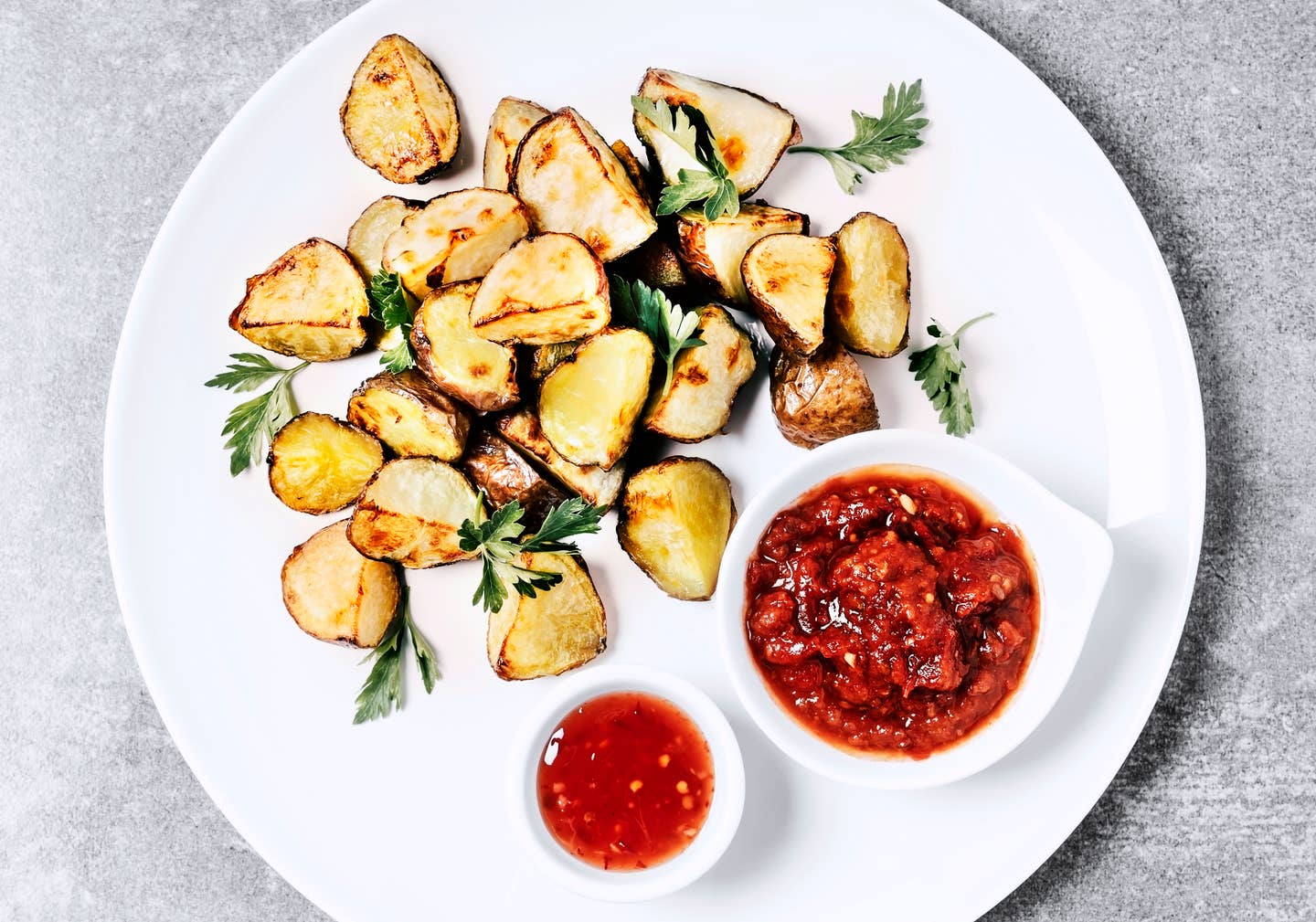
These 5 Fruits and Vegetables Lose Their Nutrients If Cooked Too Much
Whether you're a beginner cook or a restaurant-level chef, everyone who adds heat to vegetables wants to maximize the immune-boosting nutrients in their meals these days. The easiest way to do that is to not overcook or overheat your vegetables, and these five foods especially suffer when they spend too much time in hot water.
The hot topic in plant-based eating, for immunity and health, weight loss, and digestion, is nutrient density. You look for fiber, protein, calories, and vitamins in your food. But nothing destroys this quicker than high heat. Some nutrients are more bioavailable when they are steamed or broiled, while others retain more nutrients when eaten raw. What follows is the best way to cook your favorite vegetables to optimize the nutrient profile of your food.
Lemon & Sweet Red Pepper Are Best Uncooked
Vitamin C is sensitive to light, heat, and air. Who knew it was so finicky? Many vegan recipes call for lemon as a garnish or a tangy alternative to cheese to add flavor. However, since Vitamin C breaks down at temperatures as low as 86 degrees Fahrenheit, you may consider adding a spritz of lemon only as you are plating your meal. If you live in a hot climate, it is wise to refrigerate your citrus during the summer months so they don't lose their full potency while in a bowl on the kitchen counter.
Surprisingly, red peppers contain one of the highest vitamin C contents per serving, with 190 milligrams, second only to guava (which contains 377 milligrams). The texture of organic, raw, sweet red pepper is a great addition to salads or pasta. Serve peppers raw in a pesto sauce or with hummus at your next small gathering and help boost the immunity of your guests.
Garlic Should Sit Before Adding It to Your Pan
Vitamin C is also water-soluble, so keep this in mind when preparing soups and sauces with garlic, also a good source of vitamin C, and you keep more C active if you add the garlic in at the end of the cooking process. The vitamin B in garlic is also water-soluble.
Allicin is the compound in garlic that endows it with its characteristic flavor and health benefits, including increasing its ability to help boost immunity, build bone density, and aid in detoxing. One study even showed that it increases VO2 max, and can help improve athletic performance.
Raw garlic contains more allicin than cooked garlic. Allicin is formed when the cell walls of garlic are crushed or chopped and allowed to interact with air. Cooking garlic immediately after processing it can interrupt the process in which allicin forms, so best practice is to wait several minutes after chopping or crushing garlic before adding it to your cooking.
Cacao is Best When Heated At Low Temperatures
The superfood benefits of cacao largely stem from two heat-volatile molecules, tryptophan and phenylethylamine (PEA.) Since roasting processes like the Dutch cocoa process roast cacao beans at temperatures up to 302 degrees Fahrenheit, (150 Celsius) cocoa does not contain anything but trace amounts of tryptophan and PEA.
Tryptophan is a precursor to the neurotransmitters serotonin and melatonin, which regulate mood, sleep, and more. While it's famously in turkey, tryptophan is also found in vegan foods like nuts, beans, and seeds, often in greater concentrations than animal products. PEA, the molecule that is released in our bodies when we feel empathy or love, is known to occur naturally in only two foods, blue-green algae and cacao.
While your favorite brownie recipe hot out of the oven may create nostalgia, a raw cacao brownie actually brings more bliss, at least chemically speaking. (Cacao also contains the neurotransmitter anandamide, named after the Sanskrit word ānanda, which means bliss.) Anandamide is a key "feel good" compound that our bodies naturally produce, and cacao is one of the few plants that contain it other than cannabis.
Potatoes Should Never Char, and If You Use Oil, Look for a High Smoke Point
In 2017, the UK Food Standards Agency (FSA) launched a campaign called “Go for Gold”, which encouraged consumers to strive for a golden yellow color when roasting, frying, or sautéing potatoes and other starchy foods like root vegetables.
Blackened potatoes or other foods contain high levels of acrylamide, a possible carcinogen. To further protect yourself, cook your starches in an oil with a high smoke point, like avocado oil, to ensure you retain the antioxidant content in your dish.
You want to keep temperatures lower than the smoke point to reduce the carcinogens created by overheating, to avoid putting carcinogens into your healthy vegetables.
For oil smoke points, see this chart. Healthy cooking, here you come.
Avocado oil (refined) -- smoke point 520 F
Palm oil -- smoke point 455 F
Soybean oil -- smoke point 453 F
Flaxseed oil -- smoke point 450 F
Sunflower oil -- smoke point 450 F
Almond oil -- smoke point 450 F
Coconut oil -- smoke point 450
Canola oil -- smoke point 428 F
Grapeseed oil -- smoke point 421 F
More From The Beet






